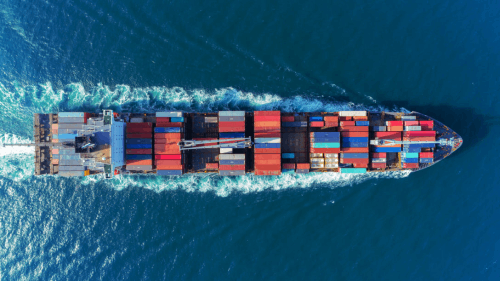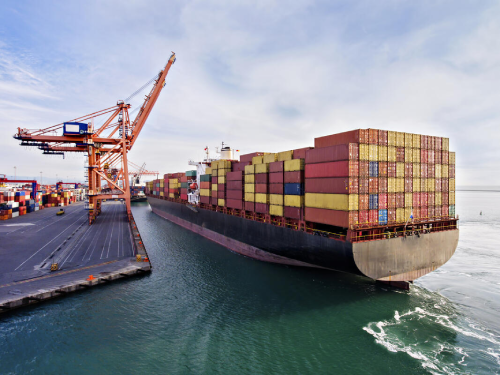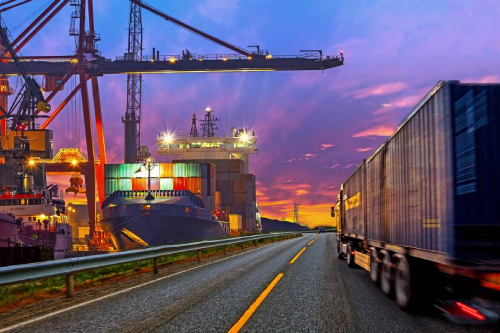Welcome to GLA! Leading the global logistics alliance.


Your location:Home > News > How should the global supply chain respond to the continuously increase in container transportation demand?
Time:2021-07-13 Publisher:Kevin Num:7539
Few people in the shipping industry believe that the current level of demand is sustainable.
However, the capacity that cannot be effectively released and the enhancement of each wave of economic indicators will gradually slow down the growth of transportation volume.
Supervision is always a boulder hanging in the hearts of shipping companies. This is the status quo summarized in one sentence.

The demand of American consumers and the manufacturing industry is constantly increasing in anticipation of the overloaded work of the container transportation system.
Industry insiders predict that this situation will continue into the quiet period when Chinese factories are generally closed due to celebrations.
Currently, U.S. merchandise sales generally exceed the speed at which U.S. retailers can ship goods from China to the United States.
European freight forwarders stated that in Asia-Europe trade, demand for Asian goods will also see similar growth.
IHS Markit raised the outlook for U.S. GDP growth from 6.5% to 7% on June 8.
The International Monetary Fund also predicts that the US GDP will grow by 7% in 2021, reaching the highest growth rate in the modern history of the US economy.
On June 20, the Eurozone PMI composite output index rose to 58.2 from 56.8 in May, a 15-year high.
The managing director of Maersk North America said at a media meeting on July 1st: "We have entered the peak season since June last year, and this peak season will ‘never end’."
He added that US importers are worried about their capacity in 2022, and some importers choose to ship in advance.
He pointed out that the US retail inventory level has hit a record low, further indicating that the shipper still has a large number of orders.
This means that American importers are selling products as fast as imported products, or even faster.
With the shortage of capacity, European imports of Asian-made goods have also begun to be affected.
There are signs that shippers are making major adjustments to their supply chains. For industry veterans, this sounds like a major chaos.
The labor disruption on the West Coast in 2014-15 led to more Asian routes to the East Coast, but this did not disrupt the system.

U.S. importers pay up to four or five times the cost of importing a FEU container from Asia in the spot market, and strive to ship the container out of the shipping terminal and inland rail hub within a few weeks.
Because of the epidemic, the pricing power has been further transferred from the shipper to the carrier.
The epidemic will not prevent importers from purchasing in Asia and other low-cost production centers, but the epidemic has accelerated customers’ concerns about the continuity and sustainability of priority supply chains.
It is predicted that this will prompt shippers to adopt a more "hybrid" approach between localization and global procurement.
This trend has existed in itself. Since 2012, logistics companies have been reconsidering their reliance on remote supply chains due to the ever-increasing carbon footprint reduction mission.
DSV's executive vice president in charge of global logistics manufacturing services said: "Most of the client companies we interviewed are concerned about the continuity of supply.
Logistics operations "still need to be efficient and optimized," but they must maintain the continuity of supply in the most effective way. "
ECU is a small and medium-sized consignor of global services.
Its CEO said: fluctuations in demand have prompted some FCL shippers to turn to the LCL market, and other shippers may continue to use LCL as a hedge against interruptions.
For some shippers, LCL enables them to ship Asian cargo immediately, rather than waiting for enough cargo to fill a container.

The CEO of Maersk Shipping believes that the close integration of various freight modes and cargo transfers also provides some buffer for importers in the event of an outage.
With the growth of procurement in Asia, the supply chain has further divided into different modules and units, operated by different service providers.
Maersk believes that more shippers are inclined to systems such as cloud computing, where different infrastructures work together.
As some shippers want to establish closer ties with Maersk, multi-year contracts currently account for 30% of Maersk’s North American business, compared to less than 10% in the past few years.
Of course, the multi-year contract looks more favorable than a year ago, the container spot rate is record-breaking, and the trans-Pacific service contract is higher than a year ago.
2019 the 7th GLA Panel Discussion Wonderful Review
Prev:New Golden Member From Vietnam——LK SHIPPING CO., LTDNext:New Golden Member From Bangladesh——JTC CARGO INTERNATIONAL
Recommended Membership
Latest News